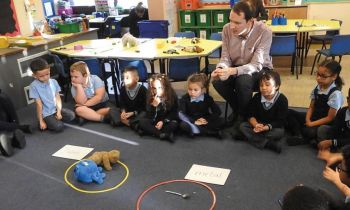In October last year I spent some time in Niagara-on-the-Lake, one of Canada’s leading wine regions. One of the processes I was interested in finding out about was that of making ice wine. The grapes, having already reached full ripeness in October, are left untouched on the vines under a cloak of protective netting until the first deep freeze of the Canadian winter. The harvest then takes place between December and January, when temperatures are between -9 to -13°C. This is where my inspiration for school improvement comes from.
After harvesting, the grapes are pressed while still frozen. The water in the juice remains as ice crystals during the pressing, and only a few drops of sweet concentrated juice are obtained from each grape. What’s important to note here is that specific conditions are required for ice wine to flourish – and incredible schools are no different. The conditions we create as school leaders in a climate of change is critical to how the school moves forward and sustains that forward momentum.
Case studies of exceptional schools indicate that school leaders primarily influence learning by galvanising effort around ambitious goals, and by establishing conditions that support teachers and help pupils succeed. At our school, Three Bridges Primary, we’ve focussed our energies on developing a culture built upon collaborative processes, intellectual stimulation, individualised support and leading by example.
BUILD COLLABORATIVE PROCESSES
Successful school leaders will actively facilitate the participation of staff in school development. We make use of targeted professional learning communities, research-driven lesson study, teacher-led open lessons and other processes to interrogate learning, support teaching practices, achieve shared goals and develop key priorities. These are characterised by hightrust and honest, open feedback from all participants in a relatively flat leadership structure.
PROVIDE INTELLECTUAL STIMULATION
Stimulate the conversation with readings or visuals that promote reflection and support teachers in examining their assumptions about pedagogy and practice. Allow teachers to identify current areas of excellent practice, and shape the path towards new ones through facilitated group discourse. Allocate time for trying out new ideas without management interference.
PROVIDE PERSONALISED SUPPORT
It’s critical that we show our teachers respect by providing appropriate incentives, and structure opportunities for individual and small group development outside of larger staff development meetings. Learning opportunities for staff must support the development of teacher skill; our own optimism, evidence base and enthusiasm should be aimed at encouraging their will.
LEAD BY EXAMPLE
As school leaders, we must be living examples of our values and ethos. Our own personal leadership resources permeate every area of the school, from the classroom to the playground. When we smile and acknowledge how lucky we are to have the best job in the world, our teachers, pupils, parents and school community do the same.
Jeremy Hannay is deputy headteacher at Three Bridges Primary School.










